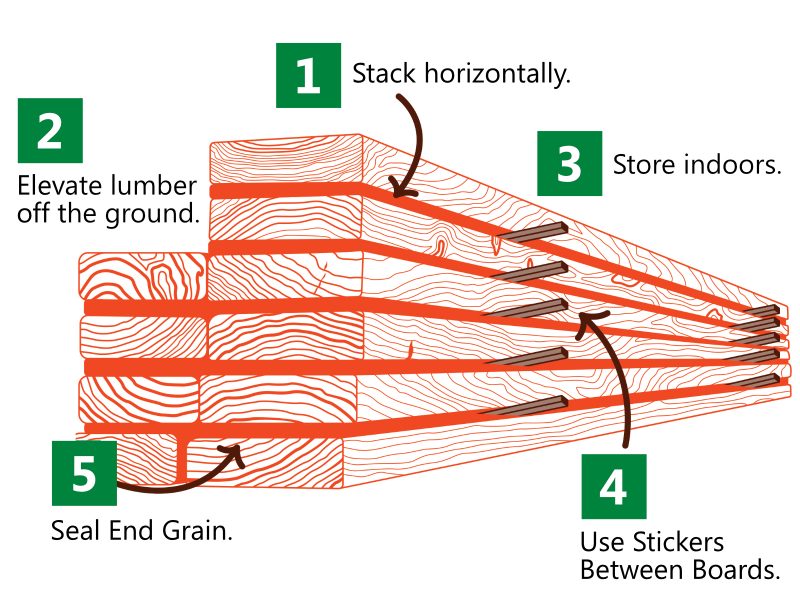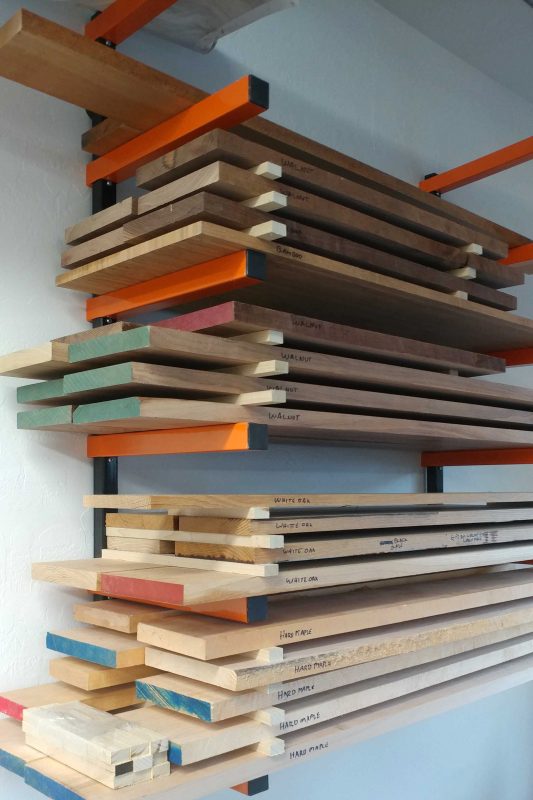
DID YOU KNOW?
Wood is hygroscopic, which means it’s constantly absorbing or releasing moisture to stay in balance with the air around it. Wood swells and shrinks throughout its life, and that’s why wood can cup, twist, crook, bow, crack or check.
Do these things to minimize problems
1. Stack Lumber Horizontally
The best way to store your lumber is horizontally instead of vertically. Storing lumber flat lets it breathe better, which will help prevent bowing or other unwanted movements that result in waste when building.
If you don’t have the space to store lumber horizontally, keep vertical lumber supported on both ends, and as close to upright as possible.

2. Keep Lumber Off The Ground
Keeping lumber off the ground will help avoid a couple of potential disasters. Namely, water damage.
We highly recommend building or investing in a cantilever storage rack for your shop. That way your lumber can be stored up high and avoid taking up precious working space.
3. Store Lumber Indoors
And away from direct sun. The last thing you want to do is let your precious lumber get sun-bleached or ruined by a rogue rainstorm. Plus some woods like purple heart and padauk lose their vibrancy from exposure to UV rays, putting a damper on their stunning color.
4. Use Stickers Between Boards
Stickers (narrow hardwood strips) help support hardwood lumber while leaving space to let the lumber breathe. Poplar is a perfect choice to make your own stickers – it’s cheap and it won’t transfer color to the wood. Keep the stickers lined up vertically as you stack more rows of boards on top to keep the weight distribution going straight down.
5. Seal End Grain
End grain is where moisture gets in and out of your boards. So seal it up to prevent splits and cracks. Just apply a thin coat of shellac, wax, polyurethane, thinned wood glue, or paint on the end grain. That will keep it as stable as possible.
Bonus: Label Your Wood
Want to look like a pro and help your future self? Grab a Sharpie and label the side grain of your lumber. You’ll thank us later for that.
Contact us for more information.